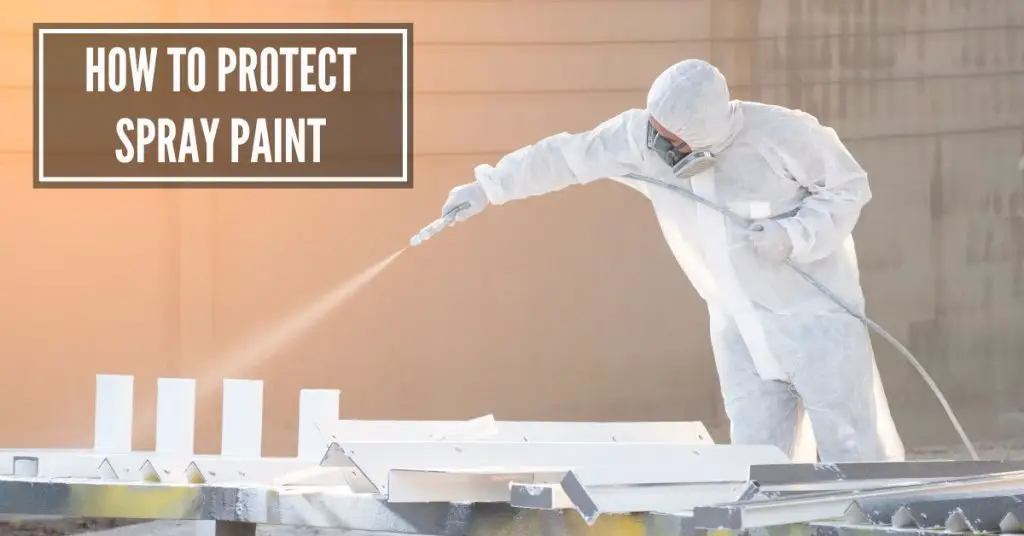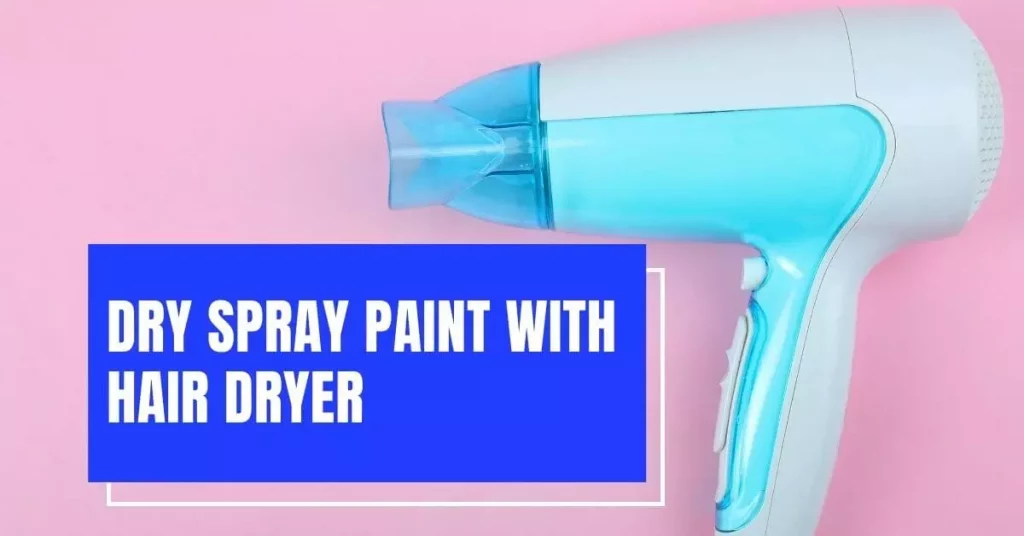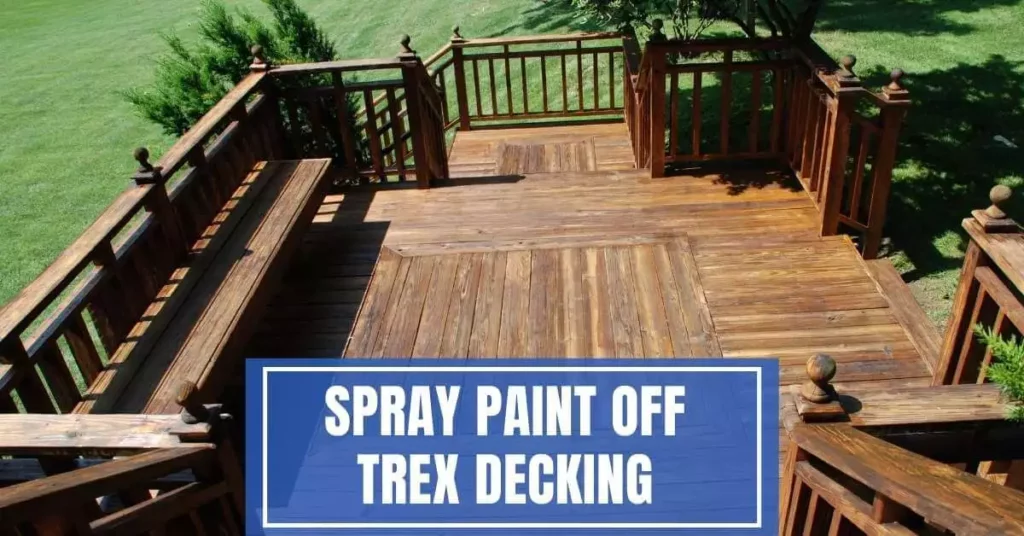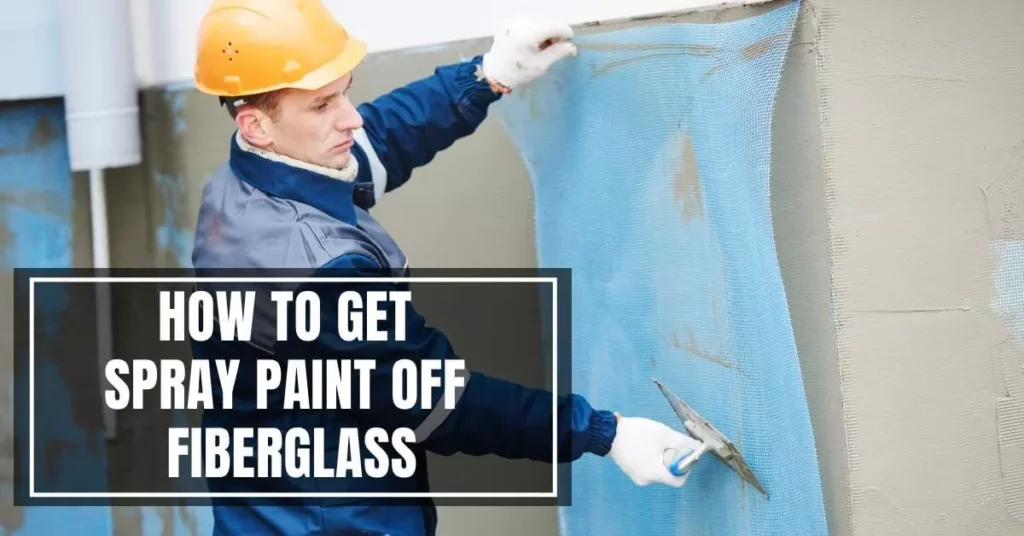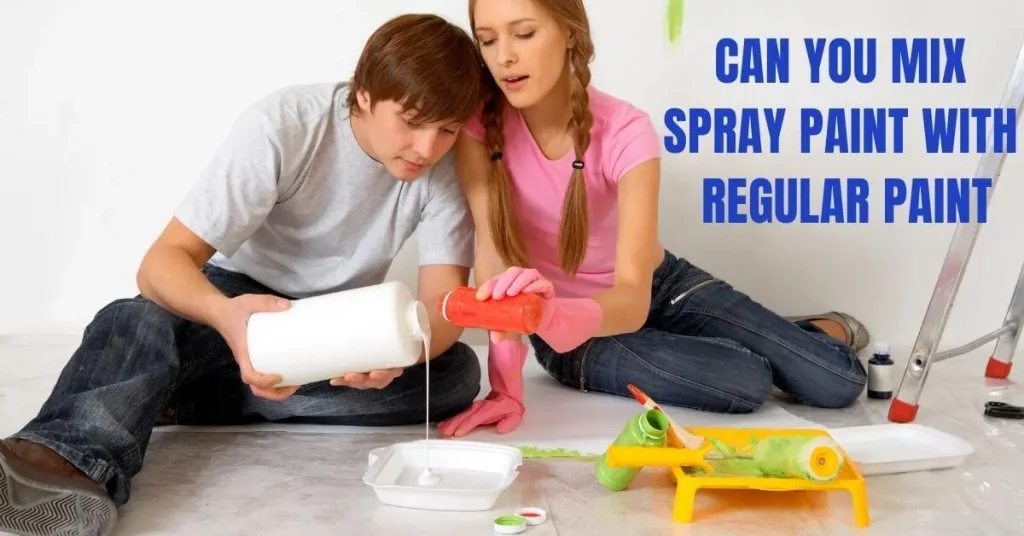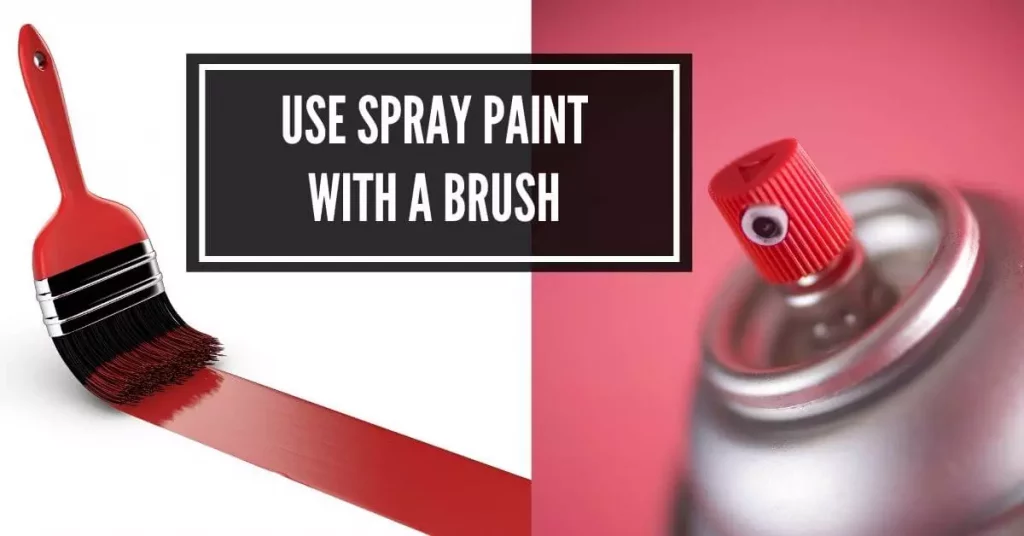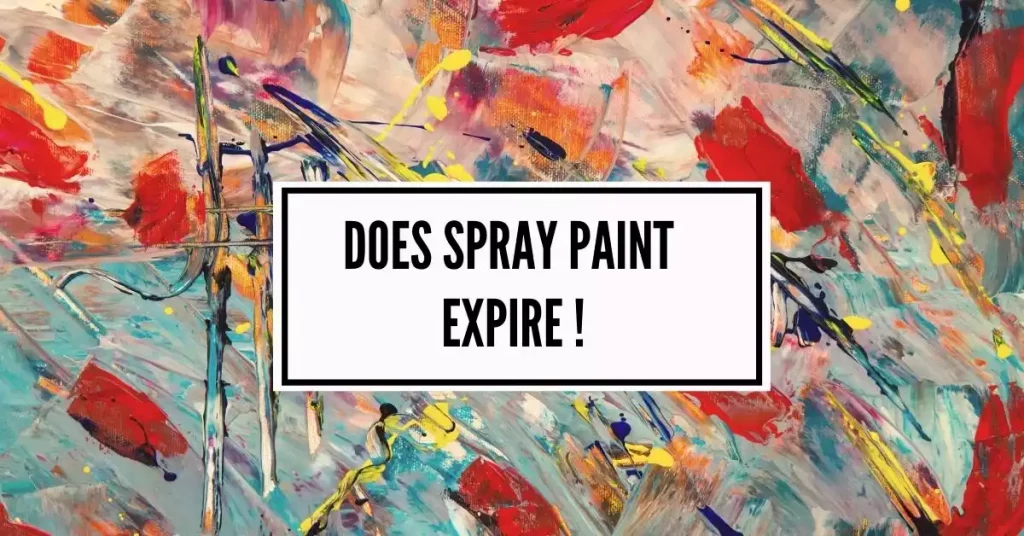Spray paint is the easiest way to give your home, room, or furniture a new look whenever you want. You can bring out your artistic era with spray paint if you know how to use it. On many websites, you can learn the proper way to use spray paint and what steps to take during the painting process to keep your paint safe.
But I will tell you how to protect spray paint after you finish cool spray paint techniques. Read on to learn the seven easiest steps to safeguard spray paint.
Table of Contents
7 Techniques to Protect Spray Paint Masterpiece
a) Dry perfectly
When you are finished spray painting an object, it is essential to make sure that the paint is completely dry before adding another coat. To ensure your spray paint dries perfectly, let it air dry for at least 24 hours before adding another coat. This allows the paint to cure and harden properly without creating any blisters or running of the paint.
If you need to add another coat of paint, wait up to 36 hours. If you wait too long, the paint can become brittle and may crack or chip when you try to add a second layer. The time can be increased if you store it in the right place.
b) Regular Maintenance
When it comes to protecting your spray paint, regular maintenance is key. The best way to keep your spray paint looking its best is to take proactive steps to ensure that the surface you’re painting on is clean and free from dirt, dust, and debris.
If you’re painting outdoors, cover any plants or furniture nearby with a drop cloth to avoid getting paint on them. Additionally, keep an eye out for any dirt or dust that may accumulate on the painted surface. If you see any, remove it as soon as possible with a clean microfiber cloth.
c) Dust Cleaning
Dust and dirt can be a spray painter’s worst enemy. If the surface you’re painting needs to be properly cleaned, it will prevent the paint from appearing uneven, streaky, or splotchy. To ensure a smooth and even coat of paint, cleaning the surface before spraying is essential.
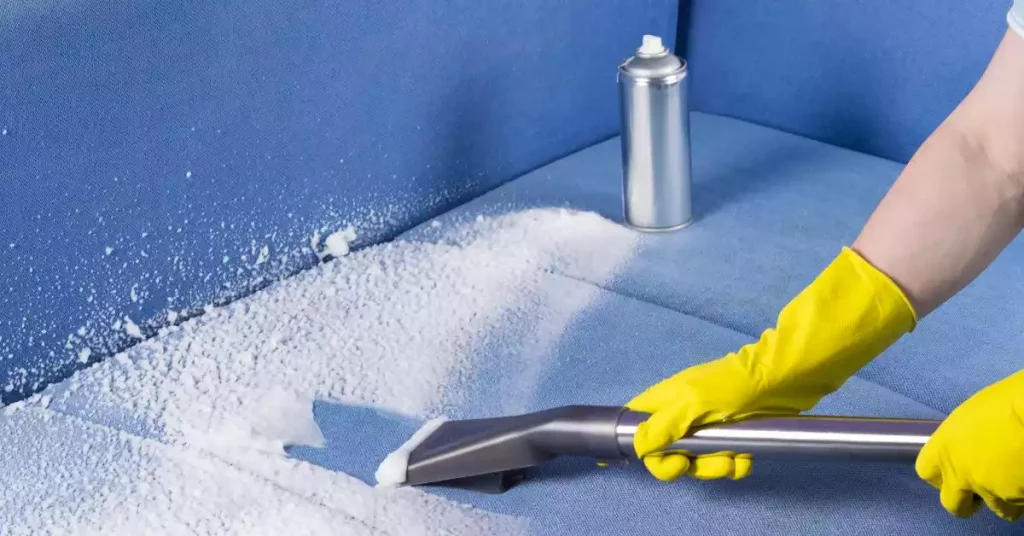
The first step to dust and dirt cleaning is to use a vacuum cleaner with a brush attachment to remove any loose dirt. Then, use a damp cloth to wipe away the remaining grime. This will ensure that your paint has a smooth surface on which to adhere.
d) Keep It Out of the Direct Sunlight
Sunlight can be incredibly damaging to the color and consistency of spray paint, causing it to fade or lose its adhesive properties. Additionally, extreme temperatures caused by direct sunlight exposure can cause the paint can explode due to increased pressure.
To avoid this issue, it is best practice to store spray paint in a cool and dry area where temperatures of 50°F to 90°F should be maintained, along with a relative humidity of less than 85%. If you are painting outdoors, try to find a shaded spot to work in or use an umbrella to protect the paint from direct exposure to the sun.
e) Keep Harsh Chemicals Away
When it comes to protecting spray paint, one of the most important things you can do is to keep harsh chemicals away. This includes products that contain chlorine, ammonia, or sulfuric acid. These chemicals can react with the paint and damage its finish or color.
f) Use a Topcoat or Sealer
The topcoat or sealer can save your paint. Topcoat has no drip formula, goes on smoothly, and helps your paint last a long time against regular wear. Not only does the topcoat make your surface look great, but it gives the surface a more finished appearance making any project look professional and polished.
It also can help provide a barrier against damaging UV rays, weather, and other elements that can cause fading or chipping of the paint.
g) Spray Lightly
Spray paint is a way to bring out art, and art can only be done if you do it in a timely manner. You need to be gentle with it. Gently spray it on a wall or furniture. Bring out all your imagination gently if you rush through that process and end up with something that looks sloppy.
To ensure a professional finish, use light coats, and shake the can before each use. Using a microfiber towel or a clean cotton rag to wipe off any excess moisture from your spray paint is an important step in protecting it.
Few More Methods to Protect Metallic Spray Paint Without Dulling the Finish
Wait! Were you about to leave? Well, don’t because I have more methods to tell you which can take your spray paint project to the next level, and you will end with a flawless finish.
1. Apply Multiple Coats for Better Results
Reapplying at least two coats of spray paint will protect your project from wear and tear. This can be especially important if you are painting something that will be used outdoors or in an area subject to a lot of foot traffic.
Applying multiple coats of paint also helps create a uniform look and ensures no missed areas. If you are painting something with a lot of nooks and crannies, reapplying multiple coats of paint can help ensure the entire surface is covered.
2. Use Plastic Paint Sheets
Spray painting is a great way to add a unique and personalized look to any project, but protecting the area around the project can be challenging. Plastic paint sheets are an effective way to contain and protect your work area while spray painting.
To use plastic paint sheets, start by measuring the area where you will be spray painting and cutting the plastic sheet accordingly. Ensuring the plastic sheet is large enough to cover the entire region, including surrounding surfaces, is essential. Place the plastic sheet on the work surface and use tape to secure it. When you finish spray paint, peel away the plastic sheet and discard it.
3. Use Cover
If you have a specific object, like a car, that needs to be spray painted, using a cover is essential. This will help protect the thing from any unwanted overspray, dust, or dirt buildup that can compromise the quality of your project. To properly cover the vehicle, you’ll need to use an appropriate material such as drop cloths, plastic sheeting, or even an old blanket.
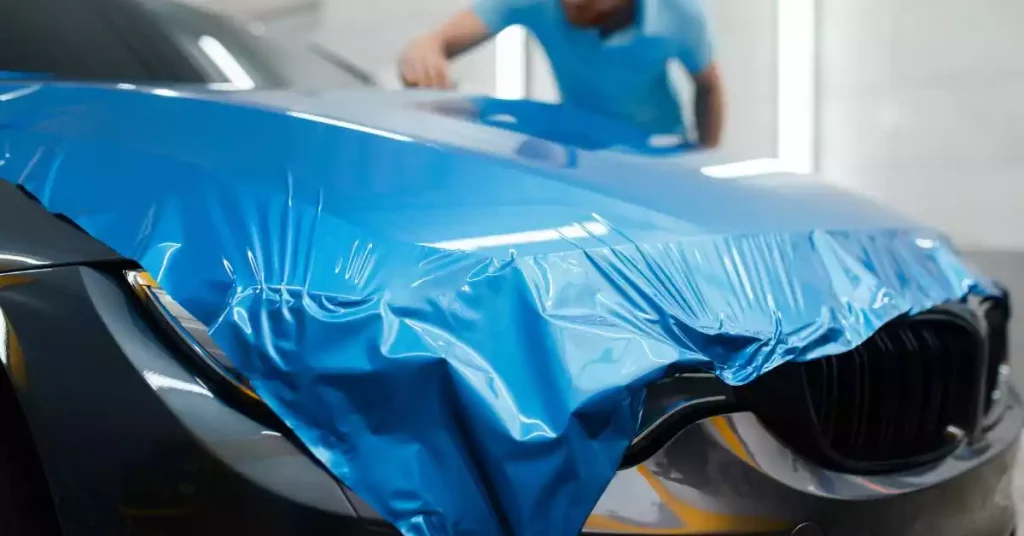
3. Use a Primer
Using a primer before painting is not an optional step, and it is important to finish this task to ensure successful, long-lasting results. Without a quality primer, the paint may begin to crack, flake, and go on unevenly after it has dried.
Primer acts as a base layer of protection and builds a strong foundation that allows the paint to adhere properly and look fantastic when it dries completely.
How to Protect Spray Paint Without Making Any Mistakes?
a) Test on a Small Spot
Before beginning any spray paint project, doing a test run on scrap paper or cardboard is wise. This will tell you how much product comes out of the nozzle and whether or not you need to move closer or further away in order to get the desired effect.
Remembering this rule of thumb – start 10 inches away and adjust accordingly – will help ensure your safety and achieve better-looking results when using spray paint.
b) Spray Too Close
Spraying paint can be a great way to add color and style to your project, but keeping the spray distance in mind is important. Starting out 10 inches away is best, and then deciding if you need to move closer as you go. This will ensure that you start at the optimal distance and create the look you want while being safe.
c) Avoid Painting on The Hot or Rainy Days
Painting outside on hot days can be tricky. Spray paint does not respond well to extreme temperatures and may create an uneven finish if applied in overly warm conditions. It is also important to check the forecast for rain, as a sudden wetting down of newly painted surfaces could be disastrous.
d) Don’t Let Children Near It
Protecting children from the area is extremely important when working with spray paint. Spray paint releases hazardous fumes that can harm a child’s developing lungs. In addition, the paint itself can be toxic when ingested or inhaled.
If possible, parents should try to keep their children out of the room while they are using spray paint. If this isn’t possible, ensure the children wear a protective mask and are kept at a safe distance from the paint.
FAQ’s
How to Keep Spray Paint from Chipping Off Metal?
Clean and sand the surface, apply a metal-specific primer and use thin, even coats of paint. After the paint dries, apply a clear UV-resistant sealer for added protection. Allow the paint to cure fully and perform regular maintenance as needed.
What Can I Put Over Spray Paint to Protect It?
Apply a compatible clear sealer or topcoat, such as acrylic, polyurethane, or varnish. These coatings guard against UV rays, scratches, and wear, extending the paint’s lifespan and appearance. You can also apply a wax protective layer over the topcoat to provide an even higher level of protection.
Are There Any Materials You Should Never Use to Protect Metal Spray Paint?
Yes, a few things should be avoided. Never use newspaper or paper towels as protection because they will absorb the paint and become part of the artwork. This can ruin the look of your piece and make it hard to remove without damaging the underlying surface.
What Are the Benefits of Using Spray Paint Protection on Metal?
It prevents fading, chipping, and cracking from exposure to sunlight, rain, and other harsh weather conditions. It also helps reduce the amount of dirt and dust that can accumulate on the surface, making it easier to clean.
Conclusion
Spray paint cans are the perfect thing to give your outdoor furniture or indoor environments an eye-catching look. The painting project isn’t hard for you if you are an artist; you can easily play with a range of colors and bring out a beautiful scenario on furniture or walls.
You need the right discretion to use spray paint and protect it. I can assure you that now you know how to protect spray paint. So, What are you waiting for? Start your spray painting projects right now.

Even though I have 10+ years of experience in the painting business, I am always trying to learn the latest coloring methods. I have been into colors since my teenage days. I spent a lot of time experimenting with new painting methods on multiple surfaces. Now, I want to spread my knowledge through my blogs and articles.

